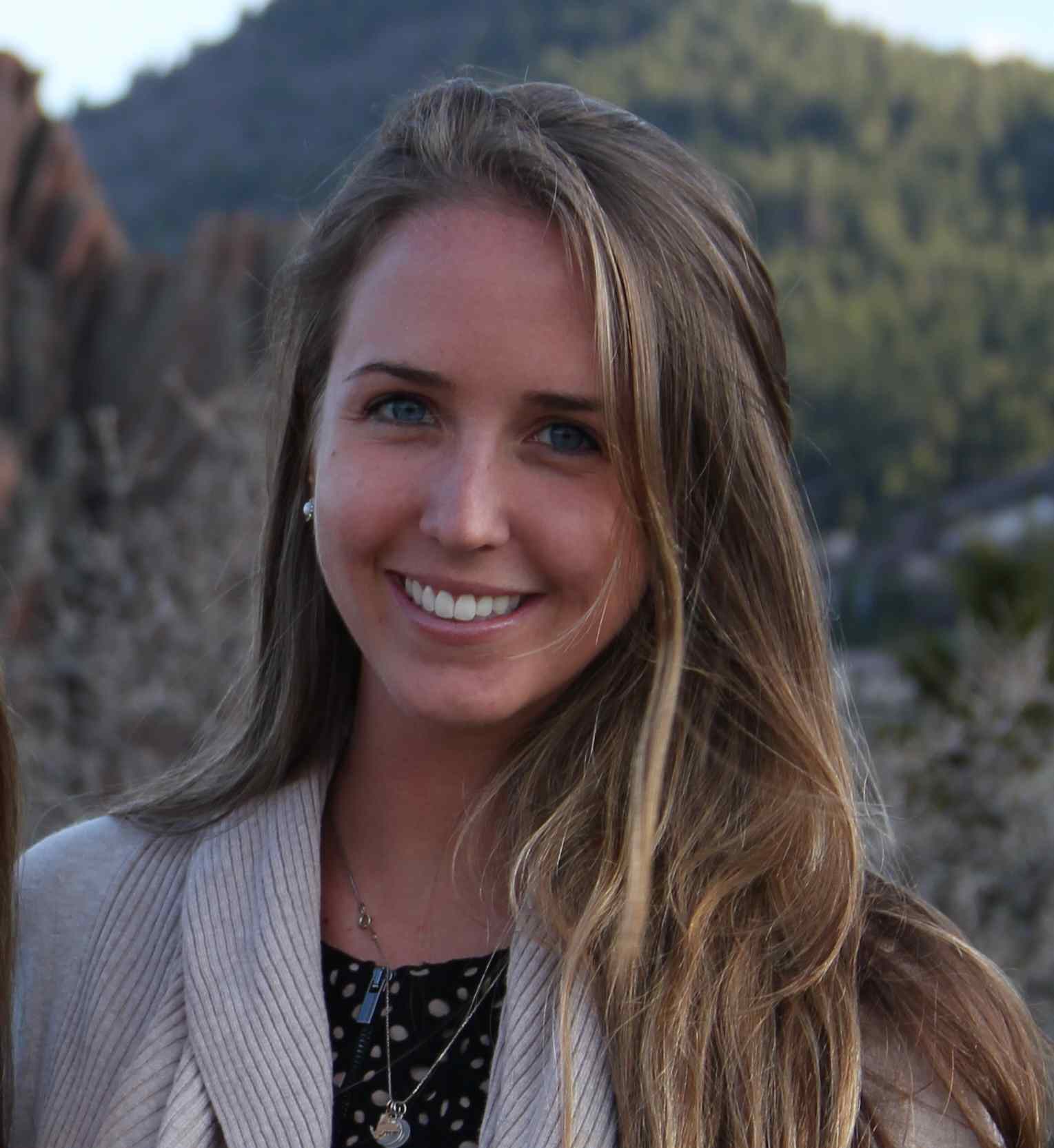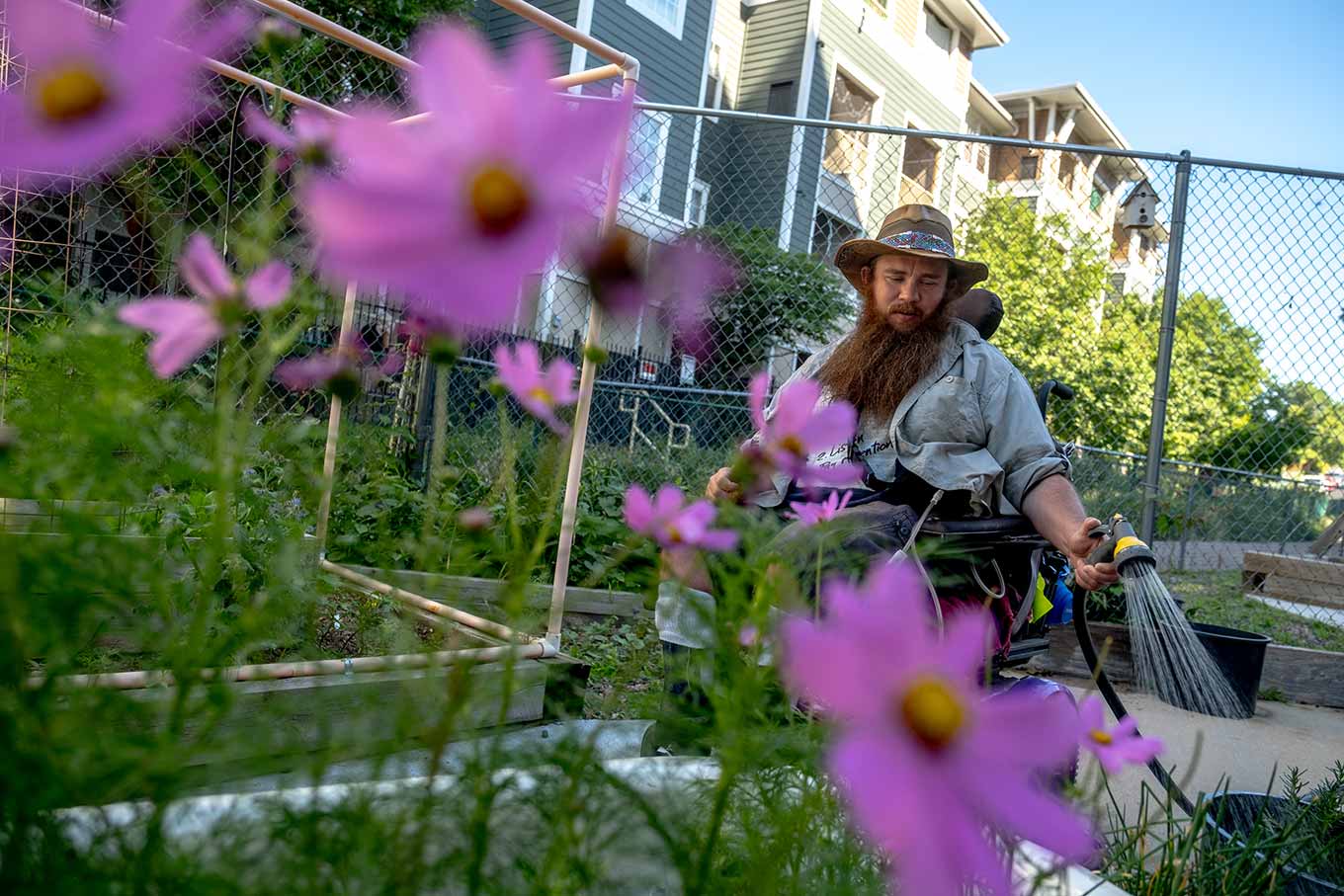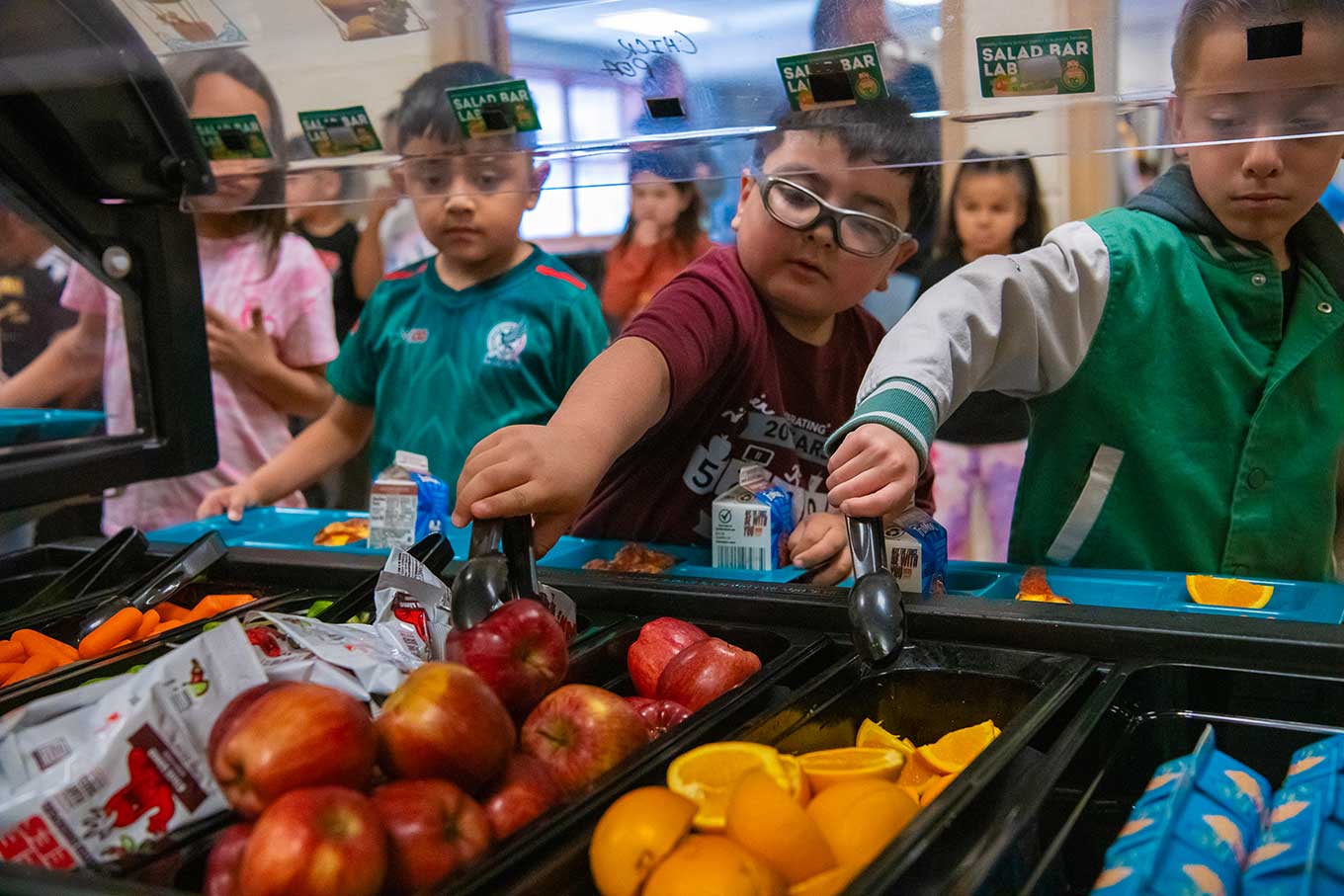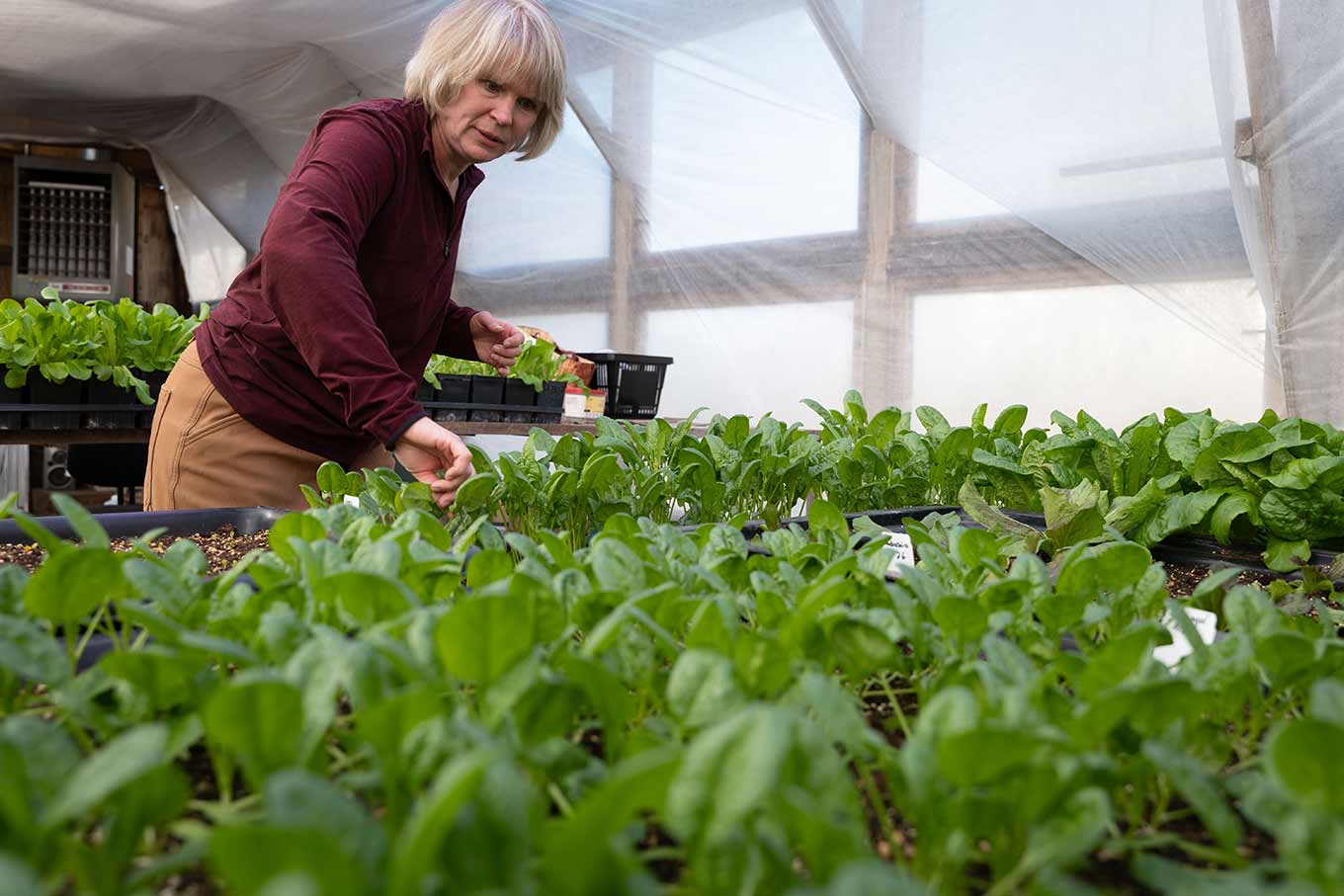Lauren Hallmark had a challenging start to college. When she was a freshman at Colorado State University (CSU) in Fort Collins, Hallmark’s campus meal plan covered just 10 meals a week, which wasn’t enough to sustain her. But coming from a family of limited means, Hallmark didn’t have the funds to fill the gap.
About every other week, she’d turn to others for help so she could avoid going hungry. “I would ask my friends if they would swipe me into the dining hall or give me a ride to go get some food and then I would pay them back later on,” said Hallmark.
The stress of not having enough food was “so hard,” recalled Hallmark, now 22 and in her senior year. It impacted her education. “I would skip class sometimes so that I could just eat in the morning.”
Hallmark’s experience is far from unique. A growing number of Americans are grappling with food insecurity, and college students are among those disproportionately affected.
“College student hunger is a growing crisis,” said Irene Lewis, a Supplemental Nutrition Assistance Program (SNAP) policy analyst for the Food Research & Action Center, a national nonprofit that supports Americans facing poverty-related hunger. A survey of 13 community colleges in Colorado, conducted in fall 2020 by Temple University at the height of the COVID-19 pandemic, found that 40% of respondents experienced food insecurity in the past 30 days.
Nearly 13% of U.S. households reported food insecurity at some point in 2022, according to the U.S. Department of Agriculture (USDA), which defines food insecurity as being “uncertain of having or unable to acquire enough food to meet the needs” of every household member due to lack of money or other resources. That’s up from 10.2% of households in 2021. The impact isn’t equal: Black and Hispanic households are more than twice as likely to experience difficulty meeting their food needs compared to non-Hispanic white households, per the 2022 data.
In 2023, Colorado educational institutions are seeing an increasing number of students struggling to get enough food. At Fort Lewis College, a liberal arts school in Durango, a spring 2023 survey found 49% of students reporting experiencing food insecurity in the past 12 months, up from 45% in spring 2019, said Stella Zhu, the college’s basic needs coordinator. Moreover, the number of students experiencing very low food security (defined as having disrupted eating patterns or reduced food intake due to lack of money or other resources, per the USDA) is rising, said Zhu, jumping from 28% in 2019 to 33% in 2023.
At the University of Northern Colorado in Greeley, 49.7% of students in 2023 reported experiencing some degree of food insecurity in the past 12 months, an increase from 44.2% in 2021, said John Hancock, the university’s assistant vice president for wellness and support.
There’s a misconception that if you can afford college or receive scholarships, you can afford food and other basic needs, said Hannah Wilks, director of service learning and basic needs at University of Colorado Boulder. And that is “just not true for a lot of students,” she said.
Research shows that students who experience food insecurity are more likely to miss class and study sessions; have trouble purchasing required textbooks; and have a greater risk of experiencing stress, anxiety and depression. Moreover, working towards a degree while trying to hold down a job or work a lot of hours “also can be a barrier to success in your education,” said Anya Rose, senior public policy manager at Hunger Free Colorado, a statewide nonprofit (and Colorado Trust grantee) that works to promote equitable access to nutritious food.
The Food Research & Action Center recently interviewed college students about food insecurity and participants reported that when they went hungry, they experienced changes in their weight, declining health, and/or falling grades, said Lewis. Conversely, when those students had access to programs like SNAP that helped them meet their food needs, “they were able to show up to class and be eager to participate,” said Lewis, and “they weren’t worried or stressed about where their next meal was coming.”

Hallmark with Michael Buttram, her food pantry supervisor and CSU’s basic needs manager, at the food pantry on Dec. 11, 2023. Photo by Eli Imadali / Special to The Colorado Trust
A confluence of factors is contributing to increasing food insecurity on college campuses. A major one is the soaring cost of housing.
According to American Community Survey data, the estimated median gross rent in Colorado increased from $1,240 in 2017 to $1,646 in 2022, a jump of nearly 33%. In the Denver metro area specifically, the average household spent 36.7% of its budget on housing from 2021 to 2022, a larger share than the national average of 33.5%, per the U.S. Bureau of Labor Statistics.
“You can’t skimp on rent—it is what it is,” said Michael Buttram, the basic needs manager at CSU. “But you can skimp on food, and people are making that hard choice.”
The rising cost of food is also contributing. “Cost of groceries has significantly gone up and that’s going to affect what people can buy,” said Buttram. A recent analysis by The Colorado Sun (a Colorado Trust grantee) of data from the U.S. Bureau of Labor Statistics found the average price of five popular grocery items—milk, hamburger meat, bread, eggs, and coffee—has increased 35% in Colorado since 2018.
“While people might still have enough to eat, they’re not getting the nutritionally dense foods that they know they need,” said Buttram.
At Fort Lewis College, students don’t usually use the term “inflation,” said Zhu, “but they definitely use the language of ‘everything is getting more and more expensive.’” A commonly expressed sentiment, per Zhu: “‘I used to be able to buy eggs and now I just can’t.’”
Climbing tuition costs are also playing a role. The cost of attending a public four-year institution rose 9.24% between 2010 and 2022, according to an analysis by the nonprofit research organization Education Data Initiative. Meanwhile, federal aid is shrinking. A maximum Pell Grant awarded today covers just 28% of the cost of attending a four-year public university, compared to 75% in 1980, according to the University of California.
There’s also the fact that “today’s college student isn’t yesterday’s college student,” said Lewis. According to the Food Research & Action Center, an increasing share of college students are first-generation; from low-income or working-class households; or are responsible for dependents while attending college.
“A lot of folks are in a more independent and sometimes financially precarious position than traditional college students,” said Rose. That can make it more challenging to cover basic needs, including food.
Yet another blow is the 2023 expiration of COVID-19 pandemic-related federal benefits that expanded SNAP eligibility so that more Americans (including college students) qualified, as well as the expiration of SNAP emergency allotments, which were additional payments given to all SNAP recipients. In Colorado, the expiration of the emergency payments impacted over 286,000 households and reduced monthly benefits by an average of $82 per participant, according to an analysis by the Food Research & Action Center.
At Fort Lewis College in Durango, students who received SNAP payments under the expanded eligibility are “now relying more heavily on food assistance programs like pantries and food banks,” said Zhu.
The Durango Food Bank doesn’t collect data on the student status of its clientele, but has seen an uptick in overall requests for assistance. On the Front Range, Kristina Thomas, director of philanthropy and marketing at Community Food Share, a food bank in Boulder and Broomfield counties, said that from 2019 to 2023, the organization has seen a 66% increase in clients ages 18-23 who used their direct distribution services.
As Hancock put it: “It really is kind of a perfect-storm situation where students are really, really struggling to make ends meet.”
Pandemic exemptions aside, “college students have always been a kind of challenging group to help connect to assistance,” said Rose. To qualify for SNAP, students attending a higher education institution half-time or more must typically come from a low-income household income and meet certain criteria, including working an average of 20 hours a week or more; participating in a work-study or workforce development program; serving as the primary caregiver for a young child; receiving cash benefits through Colorado Works (the state’s Temporary Assistance for Needy Families program); having a disability; or being “physically or mentally unfit” in a way that makes working while in school challenging, according to Hunger Free Colorado.
“The messaging has sort of been, ‘If you’re a college student, you don’t qualify unless,’ and that’s not a very welcoming message,” said Rose. Because the SNAP application can be so complicated and onerous, many eligible students don’t realize they qualify, said Buttram. A 2018 report by the federal Government Accountability Office found that in 2016, less than half of students who were potentially eligible for SNAP and at risk of food insecurity were enrolled in the program.
“Some of those hurdles that programs like SNAP put up can also be detrimental to your academic success,” said Rose.
To address the rising rates of food insecurity, higher education institutions across the state are expanding on-campus support programs. Hunger Free Colorado recently worked with the Colorado Department of Higher Education to create a “Hunger-Free Campus” designation for universities and colleges that have made significant efforts to address food insecurity by taking steps like hosting on-campus food pantries, offering SNAP outreach services to students, and collecting data on the prevalence of food insecurity at their schools. Twenty-two Colorado colleges and universities are currently listed as “Hunger-Free campuses.”
That includes CSU, where efforts include a meal swipe program, regular mobile food pantries, assistance applying for SNAP, an on-campus food pantry that serves about 500 people a week, and a food recovery program where students receive text alerts about leftover food from catered events on campus.
Hallmark learned of these supports about two years ago and said they’ve made a big impact in helping her meet her food needs. Today, Hallmark supplements her diet with food from the pantry—where she also works 12 hours per week in a paid position—and receives regular funds on a SNAP benefits card, which helps her afford groceries.
Thanks to those resources, “I haven’t thought about how I’m going to get food in the past two years and it’s been great,” said Hallmark, who is majoring in business supply chain management.
More students are needing similar support. On-campus food pantry visits have increased about 12% year over year at CSU, said Buttram. And more students are applying to the university’s meal swipe program, which provides students in need with free access to dining hall meals.
“It filled over capacity with eligible applications for 650 students in under two weeks,” said Buttram.
At the University of Northern Colorado, efforts include a food pantry that’s open about 15 hours a week to provide mostly nonperishable items as well as a monthly mobile pantry, hosted with the Weld Food Bank, which supplies perishables like produce and meats. The university also offers an allotment of free meal swipes to students who otherwise couldn’t afford to eat in the campus dining halls.
For Nicholas Kolb, a 32-year-old University of Northern Colorado graduate student, having access to the food pantry has allowed him to eat healthier meals than he would otherwise while building up his savings.
“The prices for everything [food-related] are really going up,” said Kolb. With the university’s pantry, which he visits nearly every week, Kolb can load up on produce, proteins and precooked meals. Without pantry access, Kolb surmised he would be eating more ramen noodles—which, he noted, “just don’t quite have the nutrients that a student would need to be attentive in class, retain that information, and then be able to perform on a test.”
Visits to the University of Northern Colorado food pantry are up 20% year over year, including doubling from 2021 to 2022, said Hancock. In response to the increased need, the university is planning to triple its footprint and expand the hours of its food pantry to assist more students and staff. The university is also working to open a social support hub adjacent to the pantry where eligible students can receive help applying for SNAP benefits and get connected to the university’s emergency support fund (a grant given to students experiencing economic hardships). Similar efforts are underway at Fort Lewis College and University of Colorado Boulder.
Though campus-led efforts are helping students like Hallmark and Kolb get by, larger-scale change is needed to fully combat the issue. On that front, Zhu hopes to see Colorado set aside funding to support the basic needs of college students. Both the Food Research & Action Center and Hunger Free Colorado are advocating for the federal Enhanced Access to SNAP Act, draft legislation that, if passed, would allow more low-income college students to qualify for SNAP benefits.
Buttram, for his part, views the issue as a matter of equity. “We live in a very resource-rich nation and area on our campus, so it’s not a matter of, ‘Is there enough?’” he said. “It’s a matter of, ‘Do we care enough to distribute this resource equitably?’”
Since getting food assistance support, Hallmark said her grades have gone up. She’s made more friends. And she says that she feels like she’s finally getting a true college experience: “I’ve gotten more of a social life, rather than just sitting at home worrying about how I’m going to get by.”





